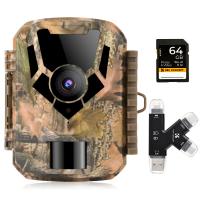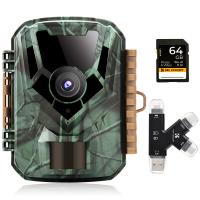How Remove Write Protection From Micro Sd Card?
In the realm of digital storage, micro SD cards are a ubiquitous and essential tool for expanding the storage capacity of various devices, from smartphones to cameras. However, one common issue that users often encounter is the write protection feature, which prevents any modifications to the data stored on the card. This can be particularly frustrating when you need to add, delete, or modify files. In this article, we will explore various methods to remove write protection from a micro SD card, ensuring that you can manage your data without any hindrances.
Understanding Write Protection

Write protection is a feature designed to prevent accidental deletion or modification of data on storage devices. While this can be useful in certain scenarios, it can also be a significant obstacle when you need to update the contents of your micro SD card. Write protection can be enabled either through a physical switch on the card adapter or via software settings.
Common Causes of Write Protection

Before diving into the solutions, it’s essential to understand the common causes of write protection on micro SD cards:
1. Physical Lock Switch: Some micro SD card adapters come with a physical lock switch that can enable write protection.
2. File System Errors: Corrupt file systems can sometimes cause the card to become write-protected.
3. Registry Settings: On Windows systems, certain registry settings can enforce write protection.
4. Third-Party Software: Some security software can enable write protection to safeguard data.
5. Card Corruption: Physical damage or corruption of the card can also lead to write protection.
Methods to Remove Write Protection

1. Check the Physical Lock Switch

The first and simplest step is to check the physical lock switch on the micro SD card adapter. If the switch is in the "Lock" position, slide it to the "Unlock" position. This should disable the write protection and allow you to modify the contents of the card.
2. Use Diskpart Utility on Windows
If the physical switch is not the issue, you can use the Diskpart utility on Windows to remove write protection. Here’s how:
1. Open Command Prompt: Press `Win + R`, type `cmd`, and press Enter.
2. Launch Diskpart: Type `diskpart` and press Enter.
3. List Disks: Type `list disk` and press Enter. Identify your micro SD card from the list.
4. Select Disk: Type `select disk X` (replace X with the number corresponding to your micro SD card) and press Enter.
5. Clear Attributes: Type `attributes disk clear readonly` and press Enter.
This should remove the write protection from your micro SD card.
3. Modify Registry Settings
For more advanced users, modifying the registry settings can also help in removing write protection. Here’s a step-by-step guide:
1. Open Registry Editor: Press `Win + R`, type `regedit`, and press Enter.
2. Navigate to StorageDevicePolicies: Go to `HKEY_LOCAL_MACHINE\SYSTEM\CurrentControlSet\Control\StorageDevicePolicies`.
3. Modify WriteProtect Value: Double-click on the `WriteProtect` key and set its value to `0`.
4. Restart Your Computer: Restart your computer to apply the changes.
4. Use Third-Party Software
Several third-party software tools can help in removing write protection from micro SD cards. Tools like EaseUS Partition Master, AOMEI Partition Assistant, and others offer features to manage and format storage devices, including removing write protection.
5. Format the Micro SD Card
If none of the above methods work, formatting the micro SD card might be the last resort. However, this will erase all data on the card, so make sure to back up any important files before proceeding. Here’s how to format the card:
1. Insert the Card: Insert the micro SD card into your computer.
2. Open File Explorer: Right-click on the micro SD card and select `Format`.
3. Choose File System: Select the desired file system (e.g., FAT32, exFAT) and click `Start`.
Preventing Write Protection Issues
To avoid encountering write protection issues in the future, consider the following tips:
1. Handle with Care: Always handle your micro SD card with care to avoid physical damage.
2. Regular Backups: Regularly back up your data to prevent data loss in case of card corruption.
3. Use Reliable Adapters: Use high-quality adapters to avoid issues with the physical lock switch.
4. Avoid Untrusted Software: Be cautious when using third-party software that can modify storage device settings.
Write protection on a micro SD card can be a significant inconvenience, but with the right approach, it can be resolved. Whether it’s a simple matter of adjusting a physical switch or delving into more advanced methods like using Diskpart or modifying registry settings, there are multiple ways to regain control over your data. By understanding the common causes and solutions, you can effectively manage your micro SD card and ensure that it remains a reliable tool for your storage needs.











There are no comments for this blog.